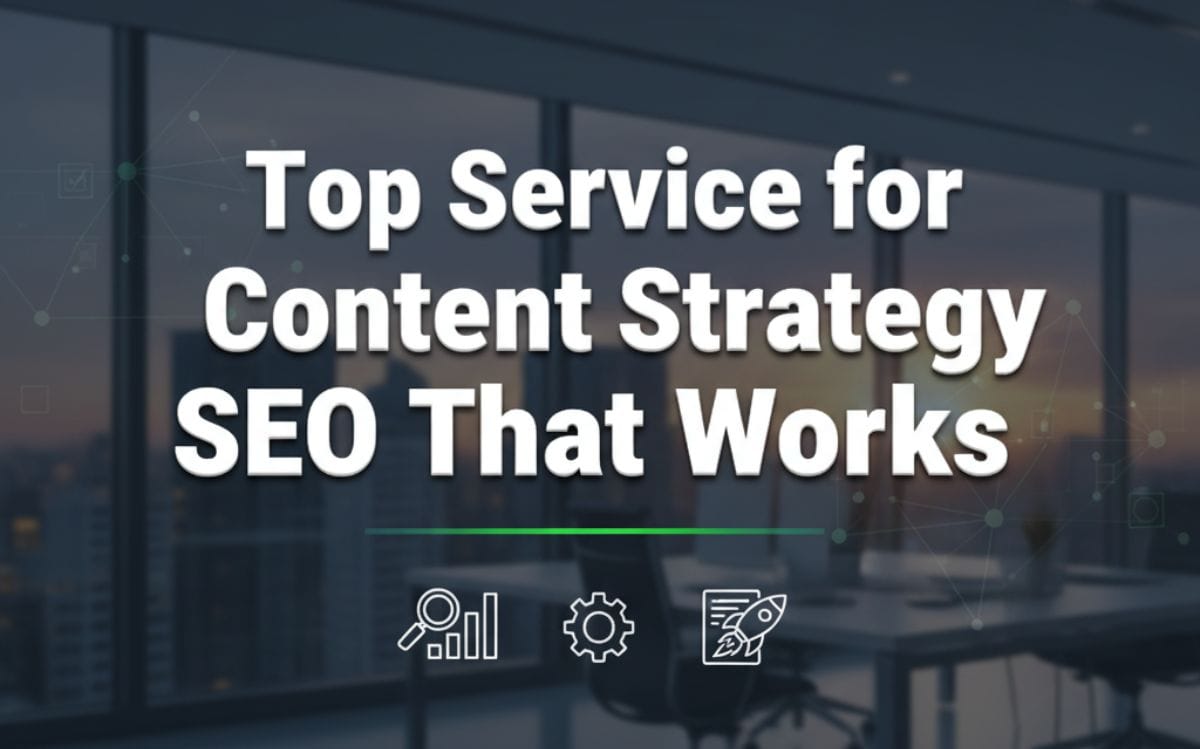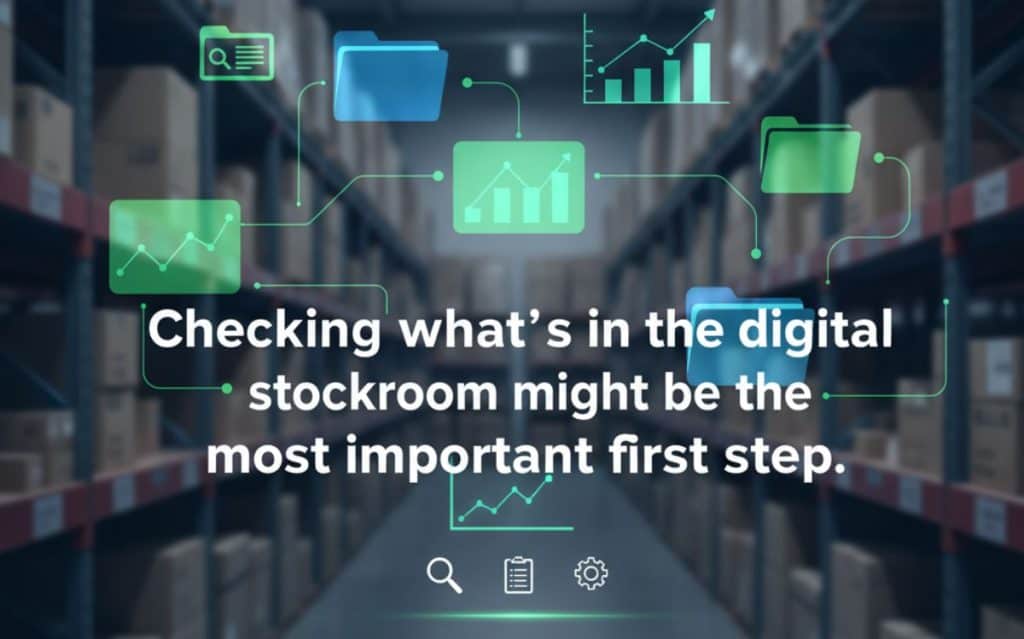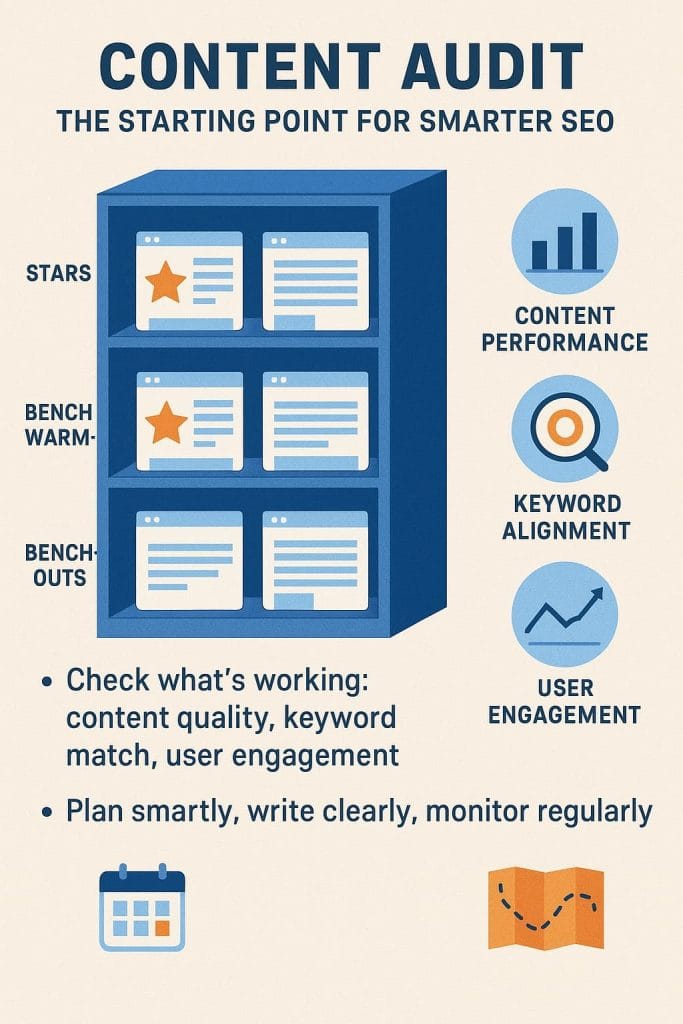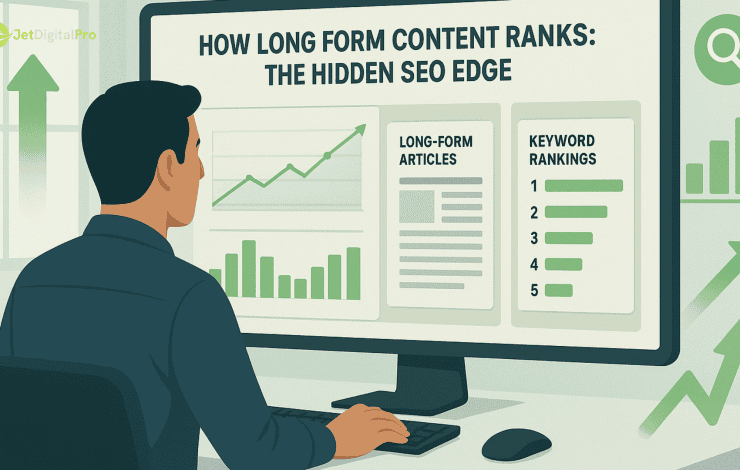
Growing website traffic that actually converts comes down to content that matches what people want. After watching hundreds of sites struggle with random blog posts and wasted keywords, it’s clear that using a service for content strategy SEO makes all the difference.
The good ones start by looking at what’s already working (or not) on your site, figure out what your audience is actually searching for, and build content that meets them halfway. Sure beats throwing articles at the wall to see what sticks. But there’s more to it than just picking keywords and writing stuff. Let’s break down what actually works.
Key Takeaways
- A good dig through your website’s content shows what’s working and spots those missed chances you might not even know about.
- Finding the right mix of popular search terms and specific industry phrases brings in the people who actually want what you’re selling (and might buy it).
- Regular check-ups and tweaks to your pages keeps you ahead of competitors, even when search trends shift around.
Content Audit: The Starting Point for Smarter SEO

Nobody likes doing inventory, but checking what’s in the digital stockroom might be the most important first step. At Jet Digital Pro, there’s no skipping this part because a solid SEO content strategy depends on knowing what’s already there before making any big moves.
Think about it like this: some web pages are star players, some warm the bench, and a few probably shouldn’t even be on the team. A thorough look shows exactly what’s what. Here’s what gets checked:
- Content Performance: Each page gets scored on how well it grabs and keeps readers. Some pages nail it with killer headlines and solid info, while others… well, they’re about as thin as gas station coffee.
- Keyword Alignment: Sometimes pages rank for the weirdest things (not what you’d want them to). It’s pretty common to find pages missing obvious keywords their readers use every day.
- User Engagement: The numbers don’t lie. How long people stick around, whether they bounce right off, how far they scroll down the page. These metrics paint a pretty clear picture of what’s working.
Once all that’s done, it’s pretty obvious what needs fixing. Maybe that blog post from 2020 needs more meat on its bones, or that product page isn’t speaking the same language as your customers. Getting this stuff straight makes everything else fall into place.
Keyword Research: Finding the Terms That Matter
Thinking that keyword research is just picking the most-searched phrases is like saying fishing is just throwing a net in the water. It’s way more layered than that, and it takes some real digging to get it right.
The first job is tracking what people are actually typing into Google these days, which terms are heating up and which ones are going cold. Then there’s looking for those sweet spots where the big players aren’t paying attention (those gaps are pure gold).
And don’t forget about those smaller search terms. They might not bring crowds, but they often bring buyers. Here’s what really needs attention:
- Words and phrases your ideal customers actually use when they’re looking for what you sell
- Different keywords for different points in the buying process. From “just looking” to “ready to buy now”
- Search terms that fit naturally into your website’s organization (no awkward stuff)
The end goal isn’t just getting more clicks. It’s getting clicks from people who might actually become customers. That’s the real difference between traffic and valuable traffic. And the stakes are high: a huge share of pages get no organic visits at all, so picking the right terms and placement matters.(1)
Content Planning: Developing a Roadmap That Works

Once you’ve got a handle on what’s working and what people are searching for, it’s time to put together a plan that actually gets somewhere. No more throwing content at the wall to see what sticks.
The meat of any good content plan ties straight back to what pays the bills. Whether that’s getting more leads, making sales, or getting the brand name out there. Sure, you need content that makes people click “buy now” or “contact us,” but there’s more to it than that.
Writing stuff that actually teaches people something builds trust, and they’ll remember who helped them out when they’re ready to spend money. Smart content planning means grouping things together in ways that make sense.
Nobody likes a messy closet, and nobody likes a messy website either. By bundling related articles and pages together (like keeping all your shoes in one place), you’re making life easier for both Google and your visitors.
These content groups do two big things: they show search engines you know your stuff, and they help people find their way around without getting lost. Pretty straightforward when you think about it.
Content Creation and Optimization: Putting Strategy Into Words
Having a great plan doesn’t mean much if the actual writing puts people to sleep. That’s why blending smart AI tools with human editors makes sense. You get the best of both worlds, and the final product actually sounds like something a person would write.
Here’s what matters most:
- Working those keywords in naturally (no cramming them in like sardines)
- Making sure everything sounds like it’s coming from the same company
- Writing stuff that actually answers people’s questions (what a concept)
Sometimes old content just needs a tune-up. Like that blog post from last year? Maybe it just needs clearer headers or better internal links to really shine. Everything gets checked against Google’s E-E-A-T standards. Basically proving you know what you’re talking about and can be trusted.
The whole point is creating content that works for both Google’s robots and actual humans. And yes, those are two very different audiences that somehow need to be happy at the same time.
Ongoing Monitoring and Refinement: Keeping Your SEO Content Fresh
Nobody likes stale bread, and nobody likes stale content either. That’s why keeping an eye on the numbers matters traffic, how long people stick around, and whether they’re actually buying stuff. When something’s not working, it gets fixed.
Content calendars aren’t just for show. They keep everything moving along like it should. Google likes websites that post regularly, kind of like how people prefer stores that stay open on a schedule. When things change (and they always do), the plan changes too.
The point is making sure your content stays sharp months after it goes live. No dusty corners allowed.
Additional Services That Enhance Your SEO Content

Sometimes the basics aren’t enough. Here’s what else helps:
- Looking at what your competitors missed (and jumping on those opportunities)
- Adding pictures and graphics that actually mean something (not just stock photos) (2)
- Double-checking everything so you don’t look sloppy
Think of these as the extras that turn good content into great content. Like adding cheese to a burger. It just makes everything better.
Why We Recommend Jet Digital Pro for Your SEO Content Strategy
Are You a Digital Agency?
White Label SEO Content Services for Agencies
Scalable, customizable, and results-driven content solutions for your clients.
There’s a big difference between throwing words on a page and creating something that actually works. Jet Digital Pro gets that. They’re not trying to be flashy. They just deliver content that holds up when Google changes its mind (which happens about as often as people check their phones).
Their team knows how to blend AI tools with real human expertise, which is probably why so many digital agencies trust them when it comes to hiring SEO writers and managing high-quality content. No tricks, no “guaranteed rankings in 24 hours” nonsense. Just solid content that makes both Google and real people happy.
The best part? They can handle anything from a small business blog to a massive e commerce site. It’s like having a content team that grows with you, without turning into a mess when things get busy. They’re the kind of partner who actually understands what SEO content needs to do. Bring in traffic that turns into customers, not just random visitors who bounce right off the page.
FAQ
How does a content strategy help grow organic traffic and reach a target audience?
A content strategy shows how to create content that speaks directly to a target audience. When used effectively, it drives organic traffic by matching what people search for with what you publish. By aligning target keywords with the needs of website visitors, you strengthen your online presence and give potential customers a reason to stay. A clear strategy turns random posts into a digital marketing plan that supports lasting growth.
What role do seo services play in building a strong seo strategy?
Seo services support the process of developing an effective seo strategy. These services may include seo content creation, seo content strategy, and ongoing seo content services. They focus on understanding search engines, applying best practices, and mapping content to target keywords. This approach helps website visitors find useful information and makes it easier for potential customers to connect with a product or service. When done well, marketing services improve online presence and steady long-term growth.
Why is it important to review existing content when using seo content?
Reviewing existing content is essential when building with seo content or following an seo content strategy. Many websites already have articles, guides, or posts that could generate more organic traffic if they are updated. By refining older pieces with new target keywords and applying best practices, you save time and avoid starting from scratch. Updating existing content also helps search engines understand your site better and improves how website visitors engage with products or services.
How do content marketing and digital marketing connect with seo content creation?
Need a Strategic SEO Content Partner?
Let’s craft SEO content that ranks, converts, and grows your brand.
Talk to UsContent marketing is a core part of digital marketing, and seo content creation strengthens both. Creating content that addresses the needs of a target audience makes it easier for search engines to rank a website. As a result, more website visitors and potential customers find a product or service. Adding target keywords and following best practices ensures that content marketing drives long-term growth rather than producing only short-term results.
What best practices should guide a seo content strategy for products or services?
A seo content strategy should follow best practices that serve both search engines and readers. These include using target keywords naturally, focusing on the needs of a target audience, and presenting a trustworthy online presence. Seo content services and marketing services can help create content that increases organic traffic and explains products or services clearly. Following these steps attracts potential customers and encourages website visitors to return.
Conclusion
Getting serious about SEO means ditching those quick fixes that never really work. The best content strategies take time. From deep dives into what’s already working to finding the right keywords and creating stuff people actually want to read. JetDigital Pro handles all of it, mixing smart AI tools with real human expertise to help agencies grow without the growing pains.
Ready to build your content strategy? Let’s talk today
Related Articles
- https://jetdigitalpro.com/understanding-seo-content-strategy-service/
- https://jetdigitalpro.com/why-human-editors-are-critical-for-seo/
- https://jetdigitalpro.com/advantages-hiring-seo-writers/
References
- https://ahrefs.com/blog/seo-statistics/
- https://www.sproutworth.com/visual-content-marketing-statistics/
P.S – Whenever you’re ready,
we’re here to help elevate your SEO content.
Partner with us for strategic, scalable content that drives real organic growth.
Contact Us Now



